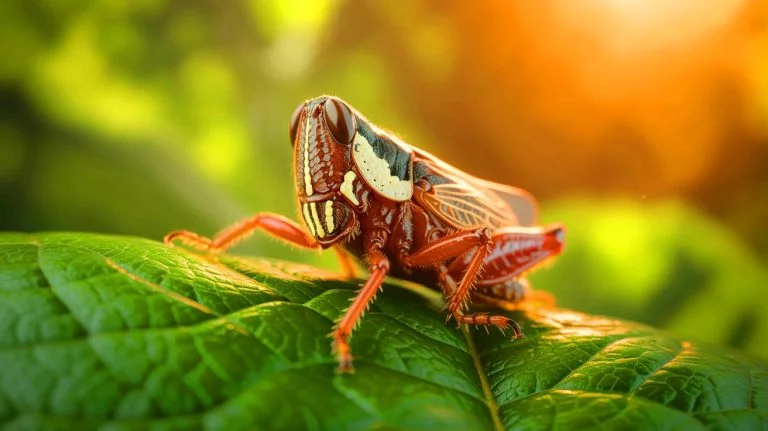| IN A NUTSHELL |
|
The peculiar world of treehoppers has long puzzled scientists. Known for their intricate and bizarre body shapes, these insects have evolved in ways that defy traditional explanations like camouflage. Recent studies by researchers at the University of Bristol propose a groundbreaking hypothesis: treehoppers might have developed their unique shapes to detect static electricity. This revelation could redefine our understanding of morphological evolution in land animals.
The Evolutionary Puzzle of Treehoppers
Treehoppers are among the most enigmatic insects, boasting over 3,000 species, each with distinct and unusual body shapes. These forms often resemble spiny helmets, tridents, or other complex structures, prompting scientists to investigate their purpose. Traditional theories like camouflage or mimicry have failed to adequately explain these features. However, a new study suggests that these shapes might serve a novel function: detecting static electricity.
The researchers at the University of Bristol embarked on this study with a thought-provoking question. They wondered if treehoppers, much like bees and caterpillars, could perceive weak electric fields. To explore this, the team examined the electrostatic charges of various insects that share habitats with treehoppers, revealing intriguing findings. Predatory wasps, common adversaries of treehoppers, exhibited significant static charges, while stingless bees, which sometimes act as protectors, carried different, less threatening charges.
Understanding Electroreception in Insects
Electroreception, commonly associated with aquatic creatures like sharks, is rarely considered in terrestrial insects. The concept that static electricity, generated through contact or movement, could influence an animal’s morphology challenges traditional evolutionary theories. The University of Bristol’s study presents compelling evidence that treehoppers can detect electric fields. However, it remains to be seen if this capability directly influenced their body shapes.
The researchers conducted controlled experiments exposing treehoppers to weak electric fields. The insects consistently moved away from these fields, indicating their ability to sense electrostatic forces. This behavior laid the groundwork for further investigation into how these insects might use their body shapes to enhance this sensory perception. The study’s findings offer a tantalizing glimpse into the potential evolutionary role of electrostatic sensing.
The Role of Computational Modeling
The study’s most technically challenging aspect involved creating 3D digital models of treehoppers with varying body shapes. By simulating electric field behavior around these models, researchers observed that more elaborate shapes amplified electrostatic signals. This amplification could make treehoppers more sensitive to electrical disturbances, such as an approaching predator.
Dr. Sam England, a lead author of the study, emphasized the significance of these findings. “Our study provides the first evidence of the electrostatic sense potentially driving morphological evolution,” he stated. While the study does not yet conclusively prove that static sensing shaped treehopper morphology, it opens the door to further exploration into the evolutionary significance of electroreception.
Implications for Broader Evolutionary Theories
If confirmed, the study’s findings could reshape our understanding of bizarre body forms beyond treehoppers. Many insects, spiders, and even plants exhibit extreme shapes with no clear explanations. The possibility that static electricity could influence such forms presents a new frontier in evolutionary biology. Dr. England expressed optimism about the study’s potential impact, stating, “There are plenty of other insects, spiders, and other animals and plants that also have really extreme shapes, which in many cases are currently without explanation.”
The study, published in the journal Science, provides a fresh perspective on the evolutionary processes that shape life’s diversity. While still in its early stages, this research could lead to a broader understanding of how electrostatic forces have influenced the morphology of various organisms.
The study of treehoppers and their unique evolutionary adaptations challenges established notions of morphological evolution. By exploring the potential role of static electricity in shaping these insects, researchers have opened new avenues for inquiry. As science continues to unravel these mysteries, one must wonder how many other evolutionary secrets remain hidden, waiting to be discovered. What other surprising factors might influence the evolution of life on Earth?
Did you like it? 4.7/5 (24)






Wow, who knew static electricity could be so shocking! 😆
Is there any evidence that other insects use this ability too?
This is fascinating, but how do they actually detect the electric fields? 🤔
Great article, learned something new today. Thanks!
Treehoppers are like the superheroes of the insect world with their electric field senses!
Why hasn’t anyone thought of this before? Seems like a big oversight.
Can these findings be applied to other animals or is it specific to treehoppers?
Not sure I believe this. Sounds a bit far-fetched.
Could this research help improve technology for detecting electric fields? 🔍
So treehoppers are basically living antennas? That’s wild!